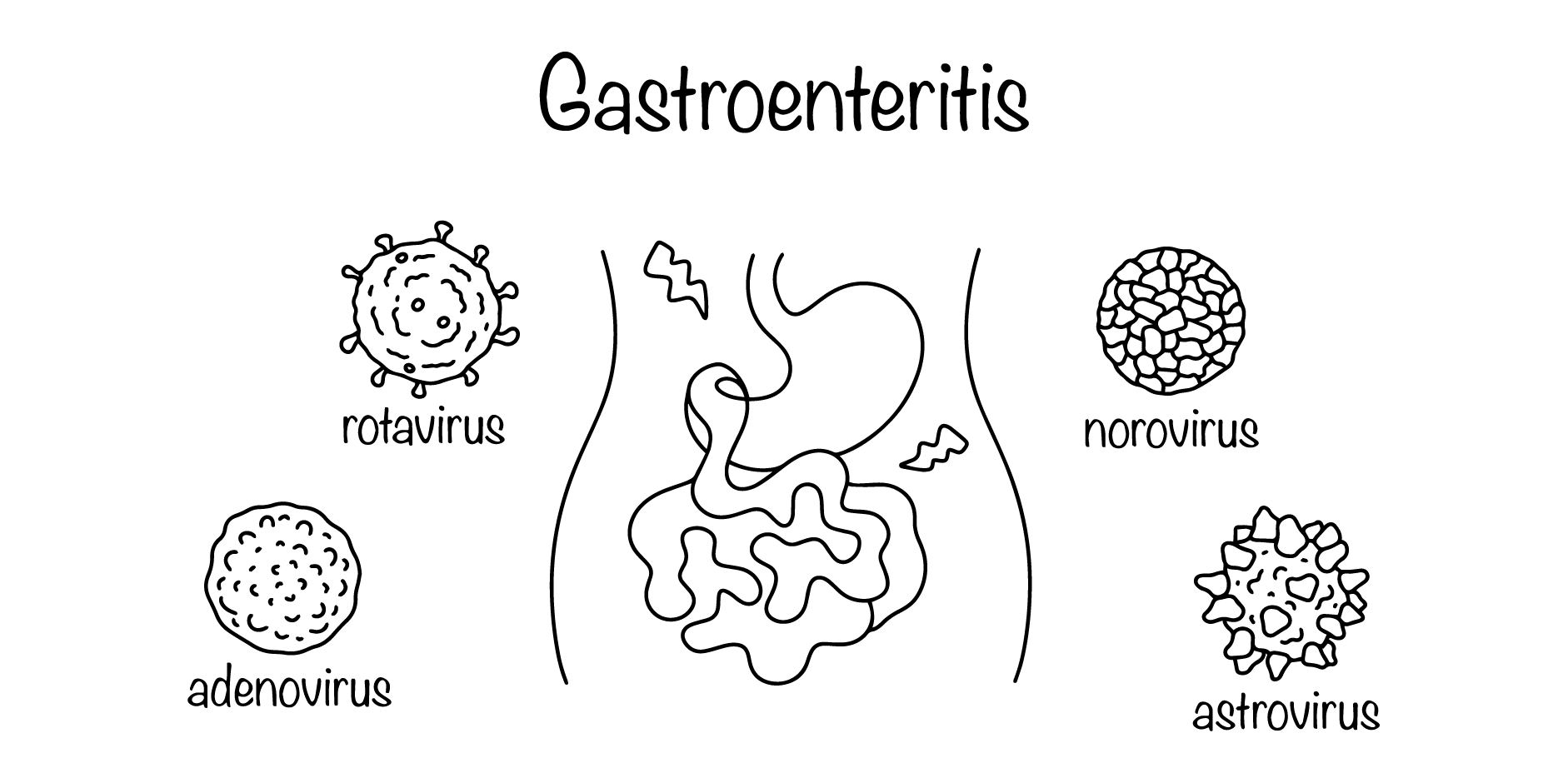Content on this page:
Content on this page:
Introduction
Acute gastroenteritis is a diarrheal disease of rapid onset, with increased stool frequency (≥3 within 24 hours), loose stool consistency with or without fever, vomiting or abdominal pain, and with diarrhea lasting for ≤14 days.
Epidemiology
Globally, this causes approximately 1.7 billion cases of childhood diarrheal disease annually, mostly caused by acute viral gastroenteritis. The incidence of acute gastroenteritis is highest among young children; however, sporadic cases and outbreaks are seen across all age groups. Viral gastroenteritis is more prevalent in winter or in cooler temperatures. Men and women are affected equally.
Etiology
 Gastroenteritis - Viral_Disease Background
Gastroenteritis - Viral_Disease BackgroundViruses are one of the common causes of acute gastroenteritis. Rotavirus, norovirus/“Norwalk-like” virus, sapovirus, enteric adenovirus serotypes 40 and 41, astrovirus, calicivirus and enterovirus are the established viral agents causing gastroenteritis. Rotavirus is the most common pathogen causing moderate to severe diarrhea in patients 3-24 months old. Norovirus accounts for over 90% of viral gastroenteritis outbreaks and approximately 50% of cases worldwide and is therefore considered the most common cause of epidemic diarrheal illness. Patients who are <3 months old are protected by maternal rotavirus antibodies that are passed transplacentally and possibly by breastfeeding. Other viral agents causing acute gastroenteritis infrequently and presenting with extraintestinal manifestations include severe acute respiratory syndrome (SARS)-coronavirus, influenza virus type B, coxsackievirus, echovirus and poliovirus.
Transmission is through the fecal-oral route, through contaminated water, ingestion of inadequately cooked contaminated shellfish, raw or undercooked meats, close person-to-person contact, and respiratory droplets. Outbreaks commonly occur in close-contact settings such as daycare centers, nursing homes and cruise ships.
Pathophysiology
The clinical manifestation of viral gastroenteritis is due to the effects of the viruses and their cytotoxins have on the enterocytes of the intestines. The virus uses the enterocytes to replicate, which leads to malabsorption and osmotic diarrhea. The viral toxins also produce direct damage and cell lysis of enterocytes and intestinal villi, causing transudative fluid loss into the intestines. The virus is shed through the feces and vomitus, peaking between 24 and 48 hours after the appearance of symptoms and lasting for several weeks.
